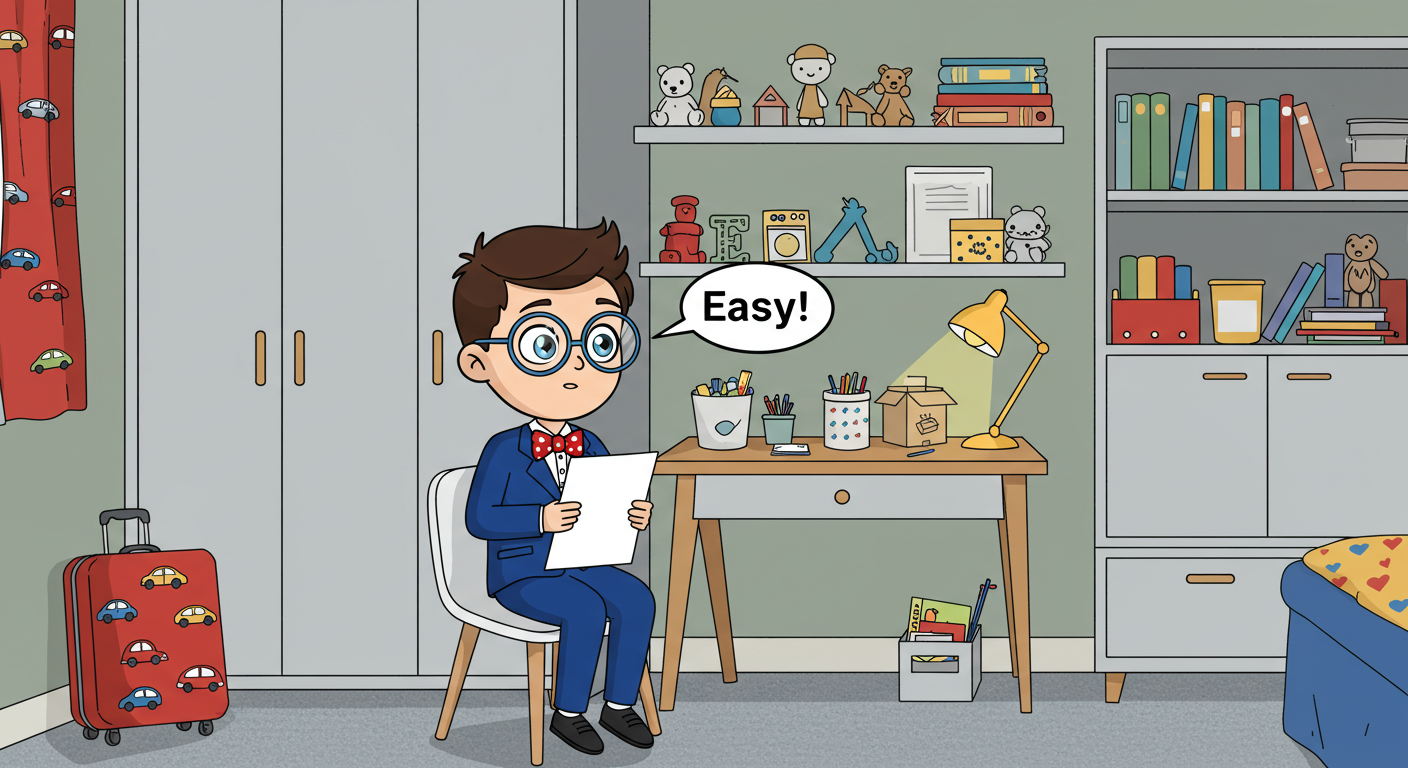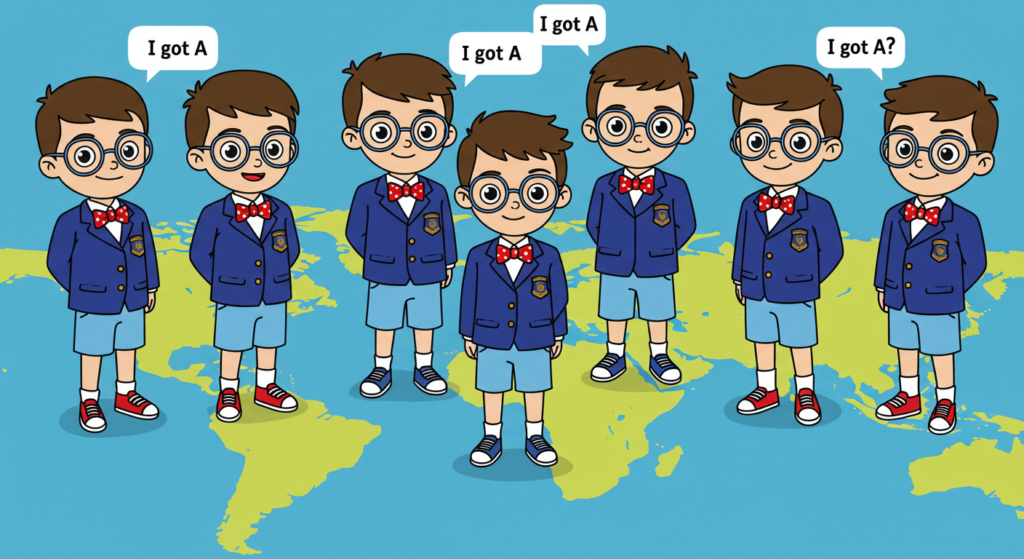
Back in 2002, the U.S. rolled out the grand vision of “No Child Left Behind,” aiming to ensure every kid crossed the academic finish line.
Sounds noble, right?
But here’s the catch: prioritizing passing rates over true mastery set schools on a curious path. To hit those goals, educators faced a fork in the road:
The Tough Route: Keep high standards, hire more teachers, and pour resources into helping every student shine.
The Shortcut: Lower the bar, turn C-level work into B’s, and sprinkle A’s like confetti.
Guess which path many took?
Spoiler: It’s why your math homework feels more like a warm-up than a brain-buster. And here’s the wild part—this trend isn’t just American; even in China, where I survived high school from 2002 to 2004, the academic rigor seems to be softening. Let’s unpack why schoolwork is getting easier, globally!
Why Schoolwork Is Getting Easier: The Big Picture
So, why does it feel like schoolwork is more “participation trophy” than “Olympic challenge”? Let’s dive into the reasons behind this decline in academic rigor, with a nod to both the U.S. and China, and a sprinkle of data to keep things legit.
1. The “Everyone Wins” Mentality
The “No Child Left Behind” Act (NCLB) in the U.S. was a game-changer, but not always for the better.
By tying school funding to test scores, it pushed schools to focus on getting kids to pass rather than excel.
Lowering benchmarks became the easy fix—why challenge students with complex algebra when a simpler version gets the same “proficient” checkmark?
If you cannot solve the question, solve the people who raises the question.
The National Assessment of Educational Progress (NAEP) backs this up: despite higher graduation rates, 2024 NAEP results show 40% of 4th graders and 33% of 8th graders below basic reading levels, with scores stagnating or dropping since the 2000s.

In China, a similar vibe emerged with the push for universal education.
Around the time I was sweating through high school in China (2002–2004), the government was expanding access to schooling, especially in rural areas. This meant more students in classrooms, but not always more resources.
To keep graduation rates up and meet national goals, some schools leaned toward easier curricula or less intense exams. By 2025, China’s “Double Reduction” policy (introduced in 2021) further dialed back academic pressure, cutting homework and banning for-profit tutoring to ease student stress.
Noble? Sure. But it’s also made schoolwork feel less like the gauntlet I remember from my college entrance examination prep days.
2. Tech and the Instant Gratification Trap
Raise your hand if you’ve ever Googled or ChatGPTed an answer instead of cracking a textbook (no judgment!). Technology has made learning faster but also shifted how we approach schoolwork.
In the U.S., apps and AI tools can whip up essays or solve equations in seconds, tempting teachers to simplify assignments that tech can’t “cheat.”
Plus, with kids glued to screens—studies say U.S. teens average 2.5 hours daily—attention spans are shrinking. Complex tasks? Nah, let’s keep it short and TikTok-friendly.

China’s no stranger to this either. When I was in high school, we drilled math problems by hand; now, apps like Xuexi Qiangguo or AI tutors do the heavy lifting.
The “Double Reduction” policy also limits homework time, meaning teachers assign bite-sized tasks to fit the rules. The result? Schoolwork feels less rigorous, more like a quick swipe than a deep dive.
A 2023 study from Tsinghua University noted that Chinese students’ critical thinking skills are plateauing, partly due to tech reliance and reduced academic intensity.
3. Grade Inflation: A’s for Everyone!
Ever notice how everyone seems to be an “A” student these days?

In the U.S., grade inflation is real—colleges now see GPAs skyrocket while NAEP scores stay flat.
Schools want happy parents and proud grads, so they nudge grades up.
A 2021 study found 60% of high schoolers get A’s, compared to 38% in 1998, even as standardized test scores dip. Teachers aren’t evil masterminds; they’re just stuck in a system rewarding quantity (graduates) over quality (skills).
In China, I felt this too, post-high school. Back in 2004, a 90/100 was a big deal; now, universities report higher average grades, especially in less competitive programs. The college entrance exam is still brutal, but some provinces have tweaked scoring to boost pass rates, and “key point” schools sometimes inflate internal grades to keep parents smiling. It’s like both countries decided, “Why stress kids out when we can all just feel good?”
4. Inclusivity Over Intensity
Making education inclusive is awesome, but it can soften the edges of rigor.
In the U.S., policies like NCLB and its successor, the Every Student Succeeds Act (ESSA), emphasize accommodating diverse learners. This often means simplifying content so everyone can keep up.
For example, complex literature might get swapped for shorter, “accessible” texts. The 2022 NAEP long-term trend data showed a 5-point reading score drop for 9-year-olds, hinting that simplified curricula aren’t always building skills.
China’s inclusivity push mirrors this. My high school days were cutthroat—only the top survived. But by 2025, China’s focused on mental health and equity, with policies like “Double Reduction” reducing competitive pressure. Schools now emphasize holistic development (think art, sports) over pure academics, which is great for well-being but can make math class feel like a breeze compared to my era’s marathon problem sets.
5. Teacher Burnout and Resource Crunch
Let’s give teachers some love—they’re juggling a lot!

In the U.S., teacher shortages (down 15% since 2010, per the NEA) mean bigger classes and less time to design challenging lessons.
Stressed teachers might lean on worksheets or multiple-choice tests over deep projects.
In China, urban schools are well-funded, but rural ones (where I studied) often lack resources. Post-2004 reforms spread teachers thin, and “Double Reduction” limits their ability to assign tough homework. The result? Schoolwork gets lighter to keep the system running.
A Global Trend, A Personal Reflection
As someone who battled through China’s high school in the early 2000s, I remember nights memorizing physics formulas and dreading the college entrance examination.
Schoolwork was a beast! Seeing both China and the U.S. trend toward easier curricula feels surreal—like we’re all chasing feel-good vibes over intellectual grit.
Sure, less stress is nice, but are we preparing kids for a world that still demands problem-solvers?
The data agrees: NAEP’s 2024 reading score declines and China’s plateauing critical thinking scores suggest we’re trading rigor for accessibility. But there’s hope! We can balance inclusivity with challenge—think creative projects that spark curiosity without crushing souls. Until then, let’s enjoy the lighter homework load… and maybe sneak in some brain teasers for fun.
What’s your take? Is schoolwork too easy, or is “easy” the new smart? Share your thoughts, and let’s keep the global convo rolling!